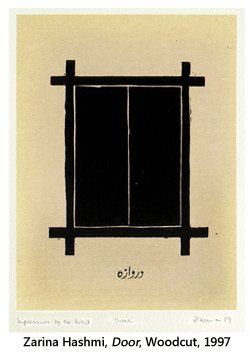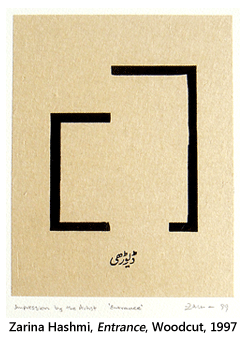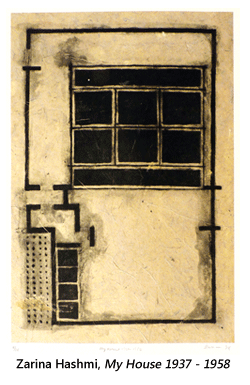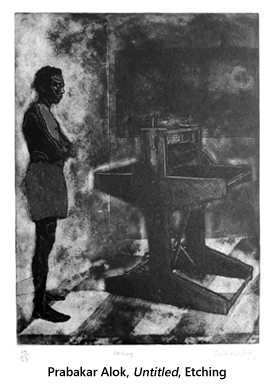- Publisher's Note
- Editorial
- Love of Life (that) Spills Over
- A Continuing Multiplication
- From Painting to Print
- Intimate Involvement
- Portrait of the Artist as an Old Man
- (Hi)Story of the Garhi Printmaking Studios, New Delhi
- Surinder Chadda
- Ramendranath Chakravorty
- Group 8
- Mother and Child: A Screenplay
- Straddling Worlds
- A Brief History of Printmaking at Santiniketan
- Vignettes from History
- Southern Strategies
- The Forgotten Pioneer: Rasiklal Parikh
- Printmaking in the City Of Joy
- Amitabha Banerjee: His Art and Aesthetic Journey
- Local Style and Homogenizing trends: Early Medieval Sculpture in Galaganatha
- English China: Delicate Pallid Beauty
- The Beauty of 'Bilal'
- Photo Essay
- The Way of The Masters: The Great Artists of India 1100 –1900
- Striving Towards Objectivity
- The Art of Sculpting In the Contemporary Times
- An Artistic Framework for an Alternative to Ecology
- Bidriware and Damascene Work in Jagdish and Kamla Mittal Museum of Indian Art
- A Lowdown on the Print Market
- The 'bubble' and the 'wobble'
- What Happened and What's Forthcoming
- Art Bengaluru
- Art Events Kolkata: June – July 2011
- Musings from Chennai
- Mumbai Art Sighting
- Previews
- In the News
- Christie's Jewellery Auction at London, South Kensington
ART news & views
A Continuing Multiplication
Volume: 3 Issue No: 19 Month: 8 Year: 2011
Lead Essay
by Waswo X Waswo
The ascendancy of the importance of printmaking in the present time is perhaps best exemplified by the installation of Zarina Hashmi's powerfully intimate portfolio, Home is a Foreign Place at this year's Venice Biennale. Ranjit Hoskote's selection of this work for India's first ever pavilion at the world's oldest (and arguably most prestigious) International Art Fair, says a lot about the status of printmaking today. The series of 32 separate woodcuts, each a meditation on the artist's inhabited spaces and personal geographies, stands out as a milestone in Hashmi's career. Though the artist has worked with various media for more than fifty years, it is this portfolio of prints (one set of which has been added to the permanent collection of the Museum of Modern Art in New York) which stands as perhaps her signature work.
Home is a Foreign Place at this year's Venice Biennale. Ranjit Hoskote's selection of this work for India's first ever pavilion at the world's oldest (and arguably most prestigious) International Art Fair, says a lot about the status of printmaking today. The series of 32 separate woodcuts, each a meditation on the artist's inhabited spaces and personal geographies, stands out as a milestone in Hashmi's career. Though the artist has worked with various media for more than fifty years, it is this portfolio of prints (one set of which has been added to the permanent collection of the Museum of Modern Art in New York) which stands as perhaps her signature work.
The common conception that printmaking is solely a commercial endeavour designed to bring low cost artwork to the middle class has of course a basis in fact. A good example of this might be Raja Ravi Varma's setting up a lithographic press in Bombay between 1894 and 1895. Employing two German lithographers to transfer his paintings into lithographic multiples, Varma shrewdly and exponentially increased the market for his popular imagery. If his romantic paintings of gods and goddesses had been previously seen as important acquisitions by maharajahs, industrialists, and the British elite, their oleographic incarnations were now also viewed as important acquisitions within modest Indian homes and shops.

A parallel to this can be found in Europe, where the German dealer and publisher D H Kahnweiler (who lived in Paris prior to his deportation from France at the onset of World War I), encouraged both Picasso and Braque to make etchings and lithographs of their Cubist experimentations. Kahnweiler, like the Frenchman Ambroise Vollard and later the German-born American Curt Valentin, set precedents in encouraging artists who were primarily painters to also create limited edition prints. These could be sold for much less money than a painting, but in a large enough quantity to hold good prospects for profit. Various artists responded to this pressure in various ways, with those such as Picasso and Braque approaching the medium with a hands-on interest and involvement, while others, such as Marc Chagall, were content to let various technicians re-create painted works in a manner similar to the way Raja Ravi Varma let trained lithographers re-create his canvases as oleographs.
A far different approach was taken to printmaking by Expressionists such as Edvard Munch, Christian Rohlfs, Franz Marc, Kathe Kolwitz and Emil Nolde. For such artists printmaking was as integral to their art as painting. Having a heavy preferentiality toward woodcut, these artists believed the force of scratching, gouging, and carving a block was directly related to their angst-ridden, sometimes violent approach to composition and subject matter.  This physical approach became a strong current within future printmaking. The days of the elegant, obsessively detailed but technician-manufactured 19th century print were fading, and new schools of expressive, hands-on printmaking were emerging with vigour. Groups such as Die Brucke and Der Blaue Reiter expounded the integral worth of the print as both direct and meaningful. Unlike Picasso and Braque, who also worked on prints with craftsman-like involvement, these artists had no dealers urging them into the medium. Rather, they were drawn to it for its sheer expressive potential.
This physical approach became a strong current within future printmaking. The days of the elegant, obsessively detailed but technician-manufactured 19th century print were fading, and new schools of expressive, hands-on printmaking were emerging with vigour. Groups such as Die Brucke and Der Blaue Reiter expounded the integral worth of the print as both direct and meaningful. Unlike Picasso and Braque, who also worked on prints with craftsman-like involvement, these artists had no dealers urging them into the medium. Rather, they were drawn to it for its sheer expressive potential.
By 1933, when the Englishman Stanley William Hayter set up his famed print studio, Atelier 17 in Paris, artists from every major modern movement were making prints. Hayter himself was an obvious spiritual heir to the physical involvements fostered by the Expressionists. He was known to severely gouge his metal plates while twisting both the graver (burin) and the plate itself. As an experimenter with the "automatism" advanced by both the Dadaists and the Surrealists, his method of creating prints foreshadowed the "action painting" of the New York School of Abstract Expressionism. Through Jackson Pollack, who studied with Hayter after the latter had moved Atelier 17 to New York, the English printmaker had a direct influence on the future of American painting. Hayter's influence extended as well to India. A notably large number of Indian artists moved through Hayter's workshop, among them Krishna Reddy,  who was to help invent the viscosity method of printmaking and eagerly use it in his own abstract expressionist work.
who was to help invent the viscosity method of printmaking and eagerly use it in his own abstract expressionist work.
In ways such as these printmaking evolved from a means to simply multiply profits to a means to multiply the possibilities of artistic expression itself. When an artist such as the Indian contemporary Rajesh Deb creates woodcut impressions in extremely limited editions (such as two) or even solo canvases printed as one-of-a-kind works, it is obvious that his use of a printing technique has no relation to any effort to increase the number of saleable objects. Rather, the medium is used for its inherent qualities and cultural associations (in the case of Deb, the woodcut's ability to evoke vintage illustrations as were once found in childhood storybooks). Conversely, an artist such as the American Andy Warhol found in silkscreen a method to play with his favourite concern: the endless repetition of objects and images in a factory-based and consumerist society. Warhol went as far as to send surrogates of himself, i.e. actors pretending to be Andy Warhol, to lecture at college campuses. In doing so the artist effectively played with the idea of "printing" his own being, not to mention ridiculing the growing cult of celebrity.
Contrary to a commonly held belief in the West, printmaking did not begin with Johannes Gutenberg and his famously printed Bible. Printmaking goes back to pre-history, when hunter/gatherers sprayed pigment directly from their mouths to create markings with the "stencil" of their hands. Both the Egyptians and the Greeks used the stencil method of printmaking as early as 2,500 BC, and the Sumerians invented seals that could indicate ownership by pressing them into clay as early as 2000 BC. In China scholars were using rubbings from carved stone text as early as 200 AD, and by the 8th century woodblock printing was firmly established there. During the same time  the Japanese were using woodblock prints to reproduce Buddhist manuscripts. The silkscreen method appeared in China somewhere between the 11th and 13th century during the Song Dynasty. It is thus not surprising that printmaking arrived in India from both the West and the East. Artists such as Ramendranath Chakravorty were greatly influenced by Japanese Ukiyo-e block prints and passed such knowledge on to eager students such as Haren Das. Quite arguably the artistic tradition that encompassed Japanese woodcut masters such as Hiroshige and Hokusai had a greater impact on Rabindranath Tagore's school at Santiniketan than the Modernist movements in Europe and the Americas.
the Japanese were using woodblock prints to reproduce Buddhist manuscripts. The silkscreen method appeared in China somewhere between the 11th and 13th century during the Song Dynasty. It is thus not surprising that printmaking arrived in India from both the West and the East. Artists such as Ramendranath Chakravorty were greatly influenced by Japanese Ukiyo-e block prints and passed such knowledge on to eager students such as Haren Das. Quite arguably the artistic tradition that encompassed Japanese woodcut masters such as Hiroshige and Hokusai had a greater impact on Rabindranath Tagore's school at Santiniketan than the Modernist movements in Europe and the Americas.
Though printmaking has developed a rich history as a purely aesthetic discipline in both the West and the East, the political power of reproducible words and imagery can hardly be ignored. The dissemination of political ideas via printed imagery captivated the imagination of Chittoprosad Bhattacharya, whose forceful woodcuts and linocuts conveyed clear-cut messages to the impoverished working class of Bengal, and perhaps more importantly, sent pangs of guilt through middle and upper society. Since Chittoprosad saw his prints as missiles propelled into a class war, the artist hardly ever took the bother to sign them and distributed them in large numbers. It is possible to equate a similar strategy in the much documented project Blame by Shilpa Gupta. It is not that hard to see the mass-produced bottles of fake blood that were central to that project, complete with their printed labels,  as a contemporary use of the printed multiple in an effort to both instil a sense of shame and galvanize political will. Likewise, graffiti artists from around the world have utilized the ancient technique of the stencil to produce confrontational, printed, artistic-social interventions.
as a contemporary use of the printed multiple in an effort to both instil a sense of shame and galvanize political will. Likewise, graffiti artists from around the world have utilized the ancient technique of the stencil to produce confrontational, printed, artistic-social interventions.
Printmaking has thus multiplied its usefulness as a medium as much as the methods of printmaking themselves multiply imagery, colour, and words. Technically, printmaking has extended itself with digital technology, laser engraving, UV inks, photo-transfer and holographic techniques. The commercial strategy of allowing high-priced artists to produce works available to low-budget collectors is still very much in play (think of the many serigraphs produced in huge quantities for artists such as the late MF Husain). The Ravi Varma approach to marketing multiples is still a reality. Yet in the hands of many artists printmaking also remains an expressive, hands-on, and extremely intimate endeavour. For some, printmaking continues as a way to explore deeply private and personal visions. It also continues to take on political agendas and lend itself as a tool for social change. Printmaking not only multiplies, it evolves. Young artists are taking printmaking into the realm of sculpture, installation and performance. Printmaking is being coupled with video projections and new-media endeavours. Conceptually, the practice of printmaking continues to open endless doors of inquiry. It is only a knowledge of printmaking's history, and an awareness of its present context, that will propel the medium forward as a serious and integral aspect of the arts.